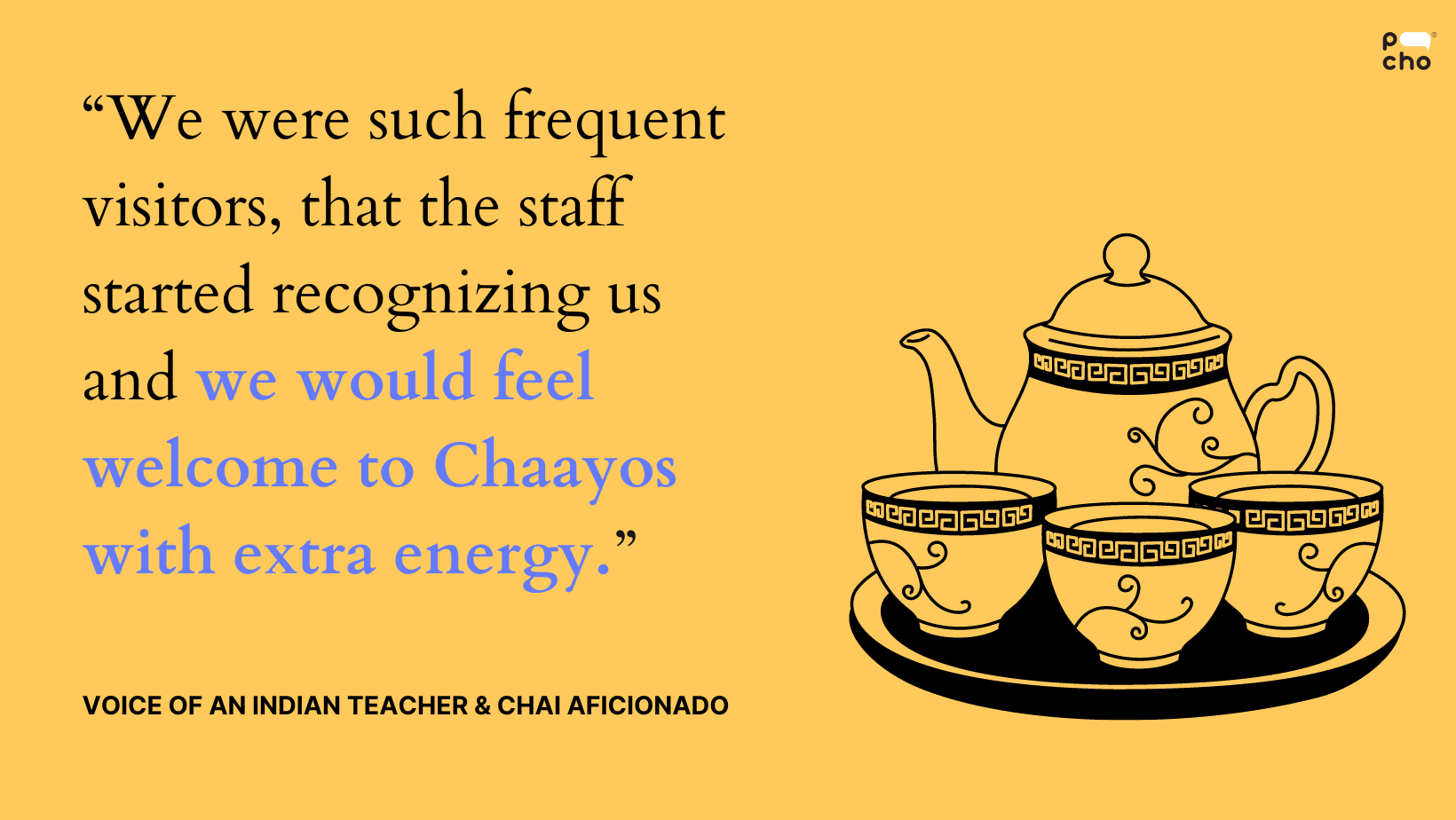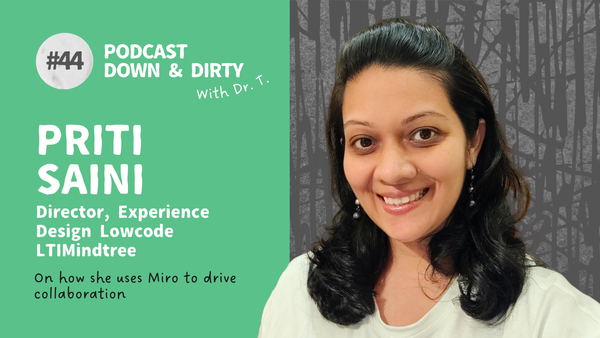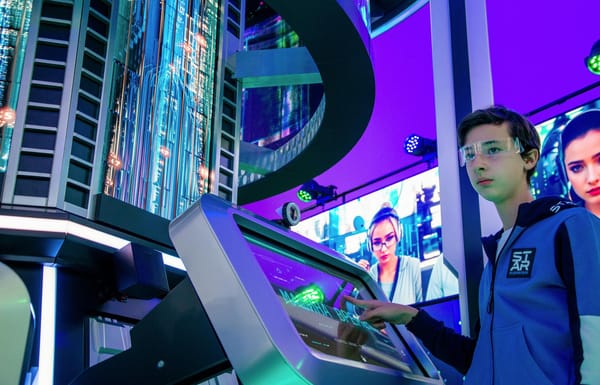💬How did Chaayos milk India's romance with tea?
Apurva Deshpande is a college teacher in Mumbai and her relationship with Chaayos reveals how India’s youth fell in love with chai (again).

Written by: Swasti Acharya
Chai is more than just a beverage in India; it's a cultural phenomenon that brings people together. It's a staple in households, workplaces, and street stalls across the region. A welcoming gesture to guests or an inviting aroma in the streets, Apurva Deshpande* reminds us how Chaayos rekindled her love for this earthy drink.
“When I was younger, I was never allowed to drink tea, you know?” says Apurva. “It’s because my grandparents thought it would make my skin darker. But c’mon, we live in one of the hottest countries in the world. I’m pretty sure it wasn’t the tea that was tanning my skin.”
It was only during her own college days that she began her forbidden flirtation with tea, going against an almost pan-Indian assumption that drinking tea darkens skin tone.
Chai’s the only constant
Coffee culture might be trending, but chai is the only constant. From the rise of local independent coffee brands sourcing beans from South Indian states to the entry of international players like Pret a Manger, there’s a special place for tea in our hearts.
“My day starts with tea and ends with tea,” describes Apurva. In the morning, it’s a cup of green tea as soon as she wakes up. In the evening, it’s a kadak chai after work when she calls her parents in Nagpur. “Maybe it’s because I was never allowed to drink it that I love it so much. But now, I can’t imagine a day without a cup of chai.” It’s probably the caffeine, but that’s not stopping India’s tea lovers.
Starbucks’ take on milk tea hasn’t sat right with most South Asians; some might call it bastardisation while others will refer to it as globalisation. Either way, it doesn’t change the fact that the cafe retail space is frothing with milk-based (and alternative) beverages.
From Chai Tea Latte to Chaayos
Like most South Asian diaspora living outside, Chaayos’ founder Nitin Saluja too was longing for elements of his motherland’s cuisine. For him, it was the perfect desi cup of tea. The idea of starting a tea cafe struck when he couldn’t find a place that served a freshly-brewed cup of strong tea in Houston, TX.
Since its inception in 2012, Chaayos currently serves “a good cup of tea outside home” across 100 stores across Delhi, Mumbai, Bangalore, Pune, and Hyderabad. The idea was to present tea in a modern way that would appeal to contemporary audiences. The concept of meri wali chai (psst Nestlé’s Meri Waali Maggi campaign), allows customers to customize their tea based on their preferences, just like they would make it at home. For example, they can have ginger tea or a combination of ginger, basil, fennel, and black pepper with varying amounts of milk and water.
“Chaayos has this thing where when you enter, someone yells, 'Welcome to Chaayos!'” says Apurva. “But we were such frequent visitors, that the staff started recognizing us and we would feel welcome to Chaayos with extra energy. So that was very sweet of them. To the point, they'd be like, ‘Oh, today, you're not having this chai’, or 'You're having that chai today.’ I think that’s what made Chaayos even more special, you know?”
Apurva’s been to multiple outlets across the city and there’s always a slight difference in the ambience in each of them. Quick Service Restaurants outlets practice this specially when they are in a ‘high-repeat’ market category and they want to offer something new and exciting to a visitor so she might come again and again.
Ek gourmet chai ki pyali ho
Even as consumers demanded variety and distribution channels became more innovative, the tea market in India had a staggering performance in the wake of Covid-19. But the desire for fun foodscapes coupled with nostalgia marketing promises a new dawn for gourmet tea brands and chai cafes; particularly in the luxury and gifting segment. In fact, artisanal tea brands are reviving tea consumption and its reincarnations as ‘cool’ and ‘hip’ amongst youngsters by incorporating product lines like matcha and bubble tea.
Retaining plantain colonial legacy, legacy tea brands in India like Hindustan Unilever and Wagh Bakri are brewing a cup in their own tea lounges. Just about 300 m down the street of Chaayos on Chapel Road lies a pretty and sophisticated establishment in white set up by Brooke Bond Taj Mahal. When you feel like masala nibbles aren’t cutting it with chai, your gourmet-esque tea is seductively omnipresent. At the end of a long day, which lover do you turn to?
*We anonymize participant names to protect their identities and encourage more honest dialogue.



